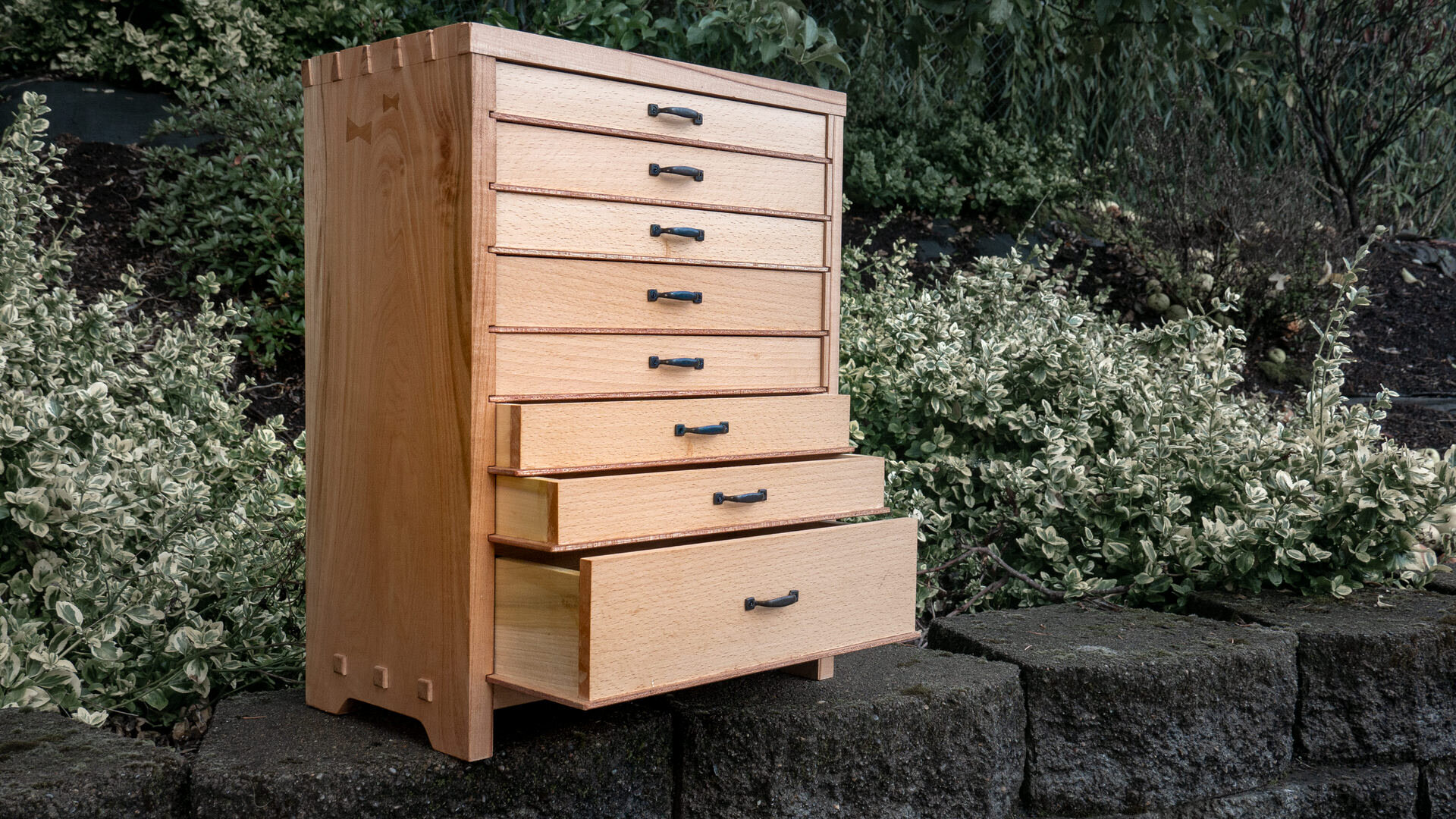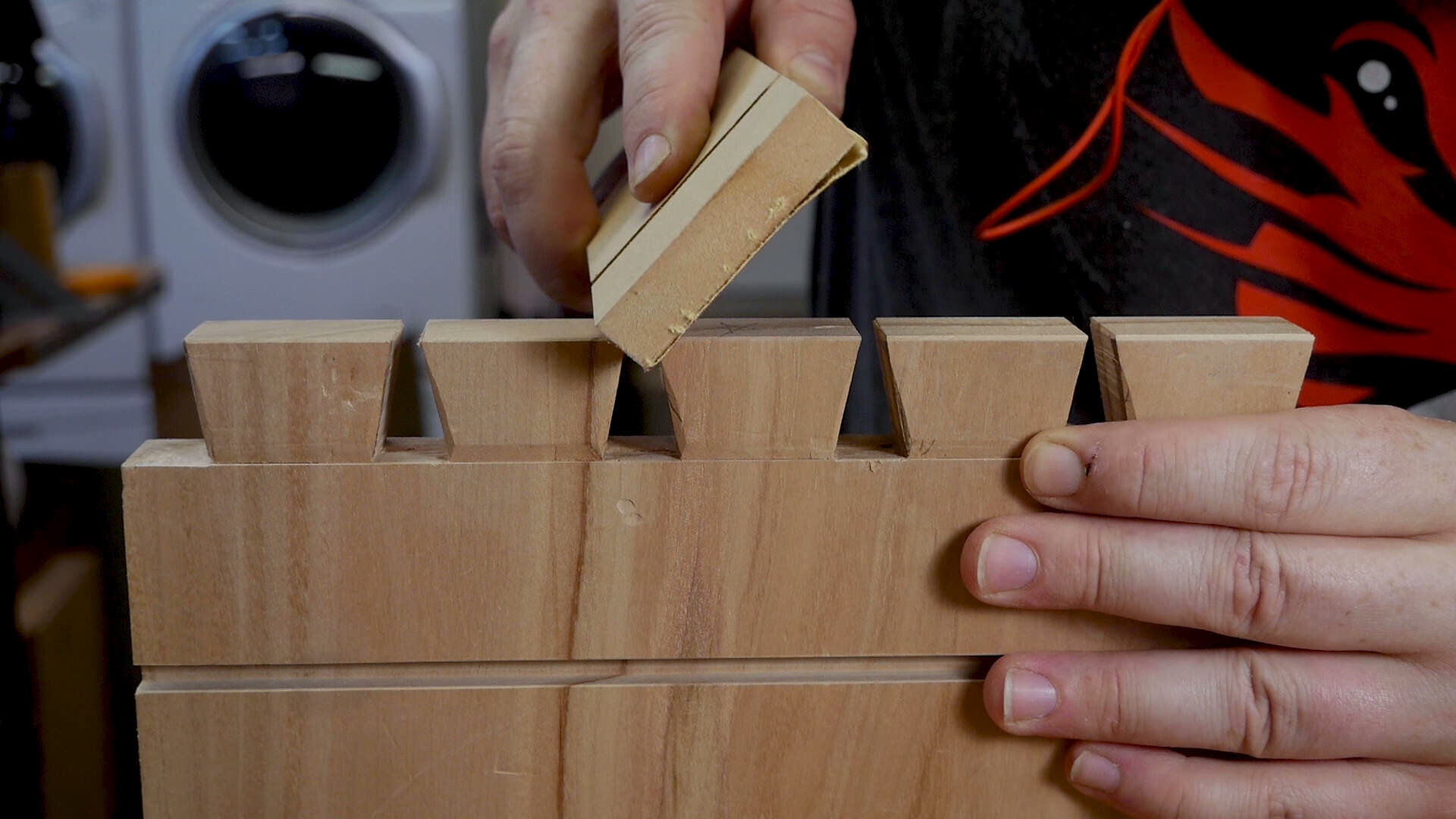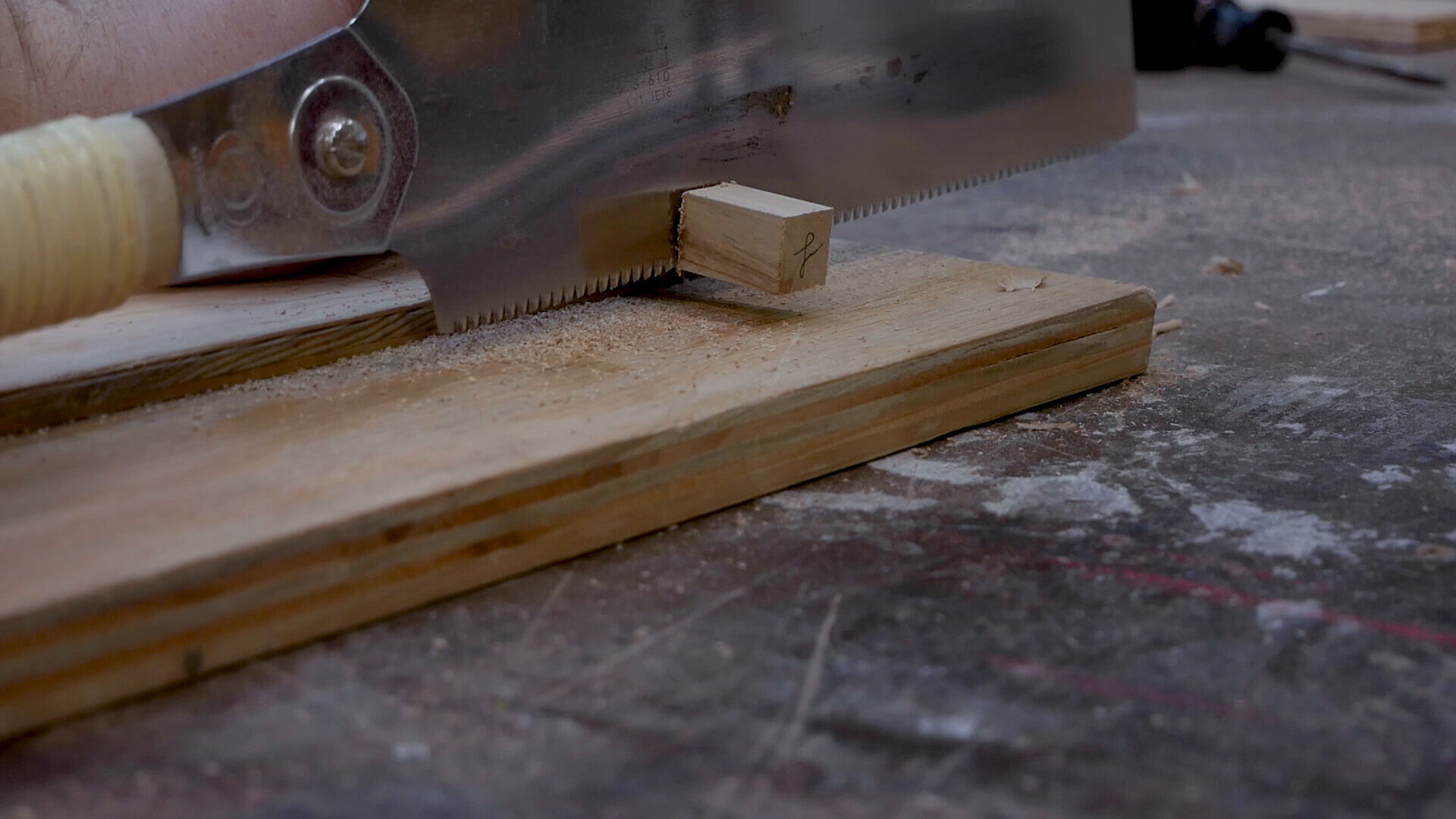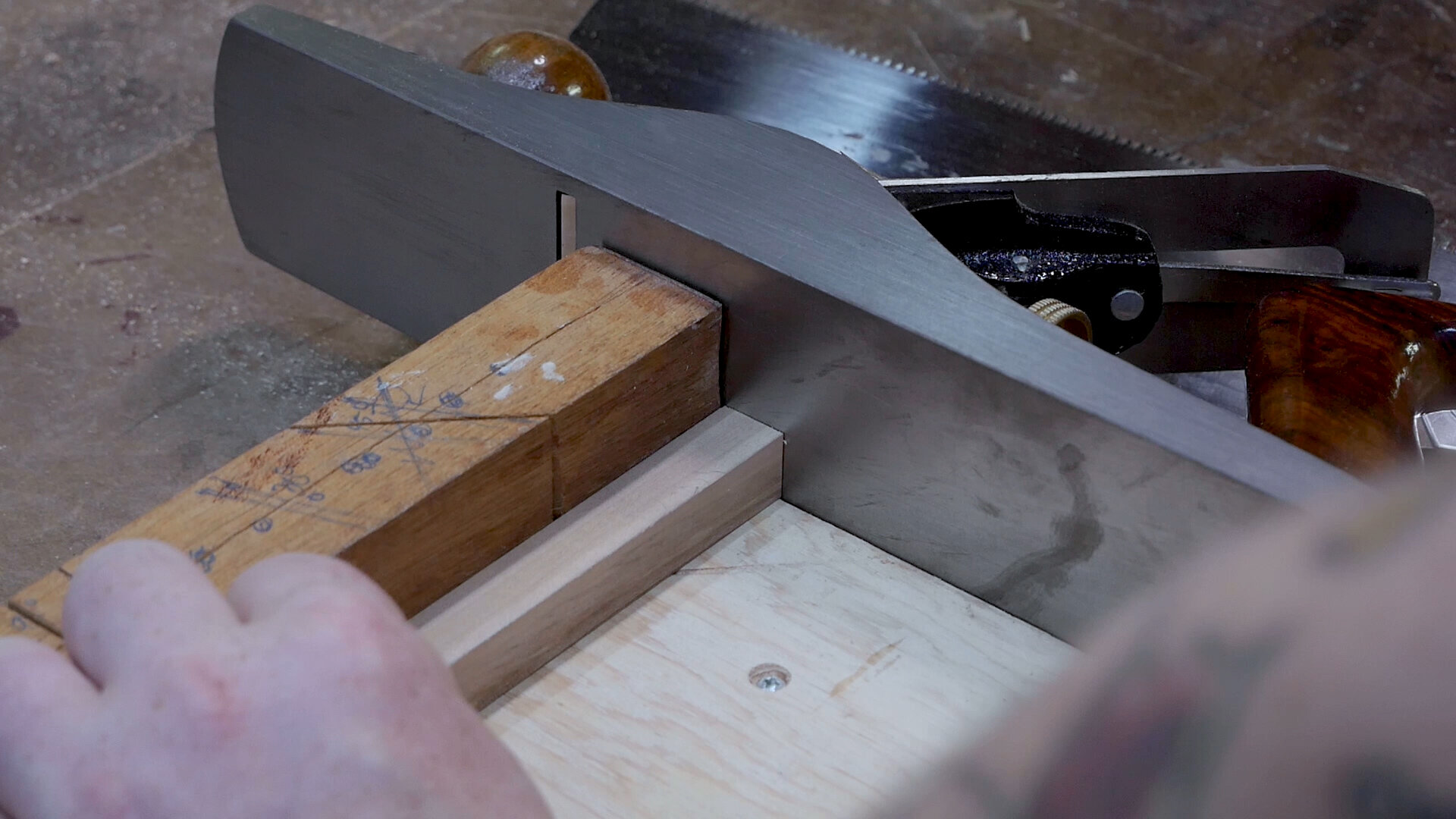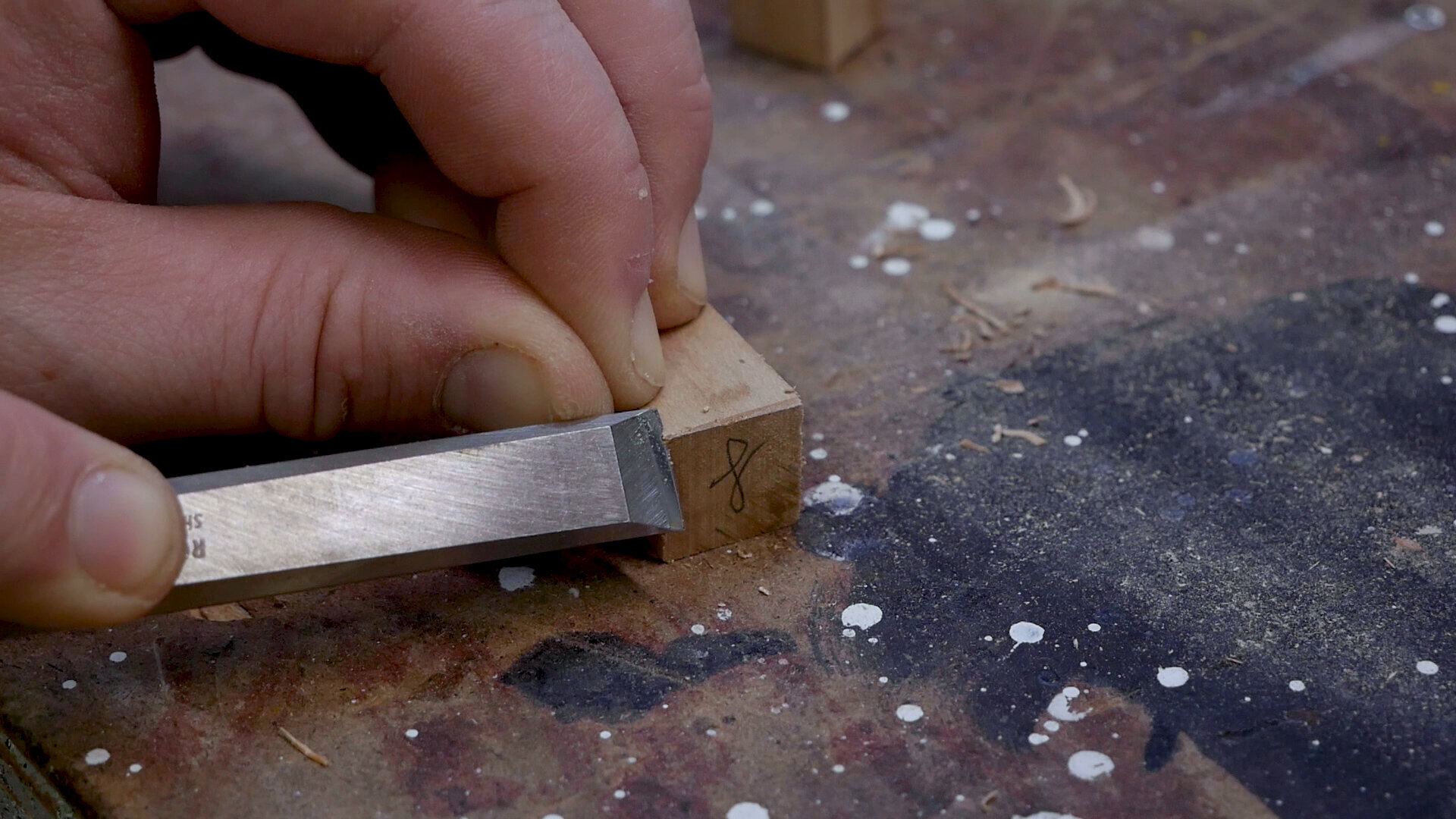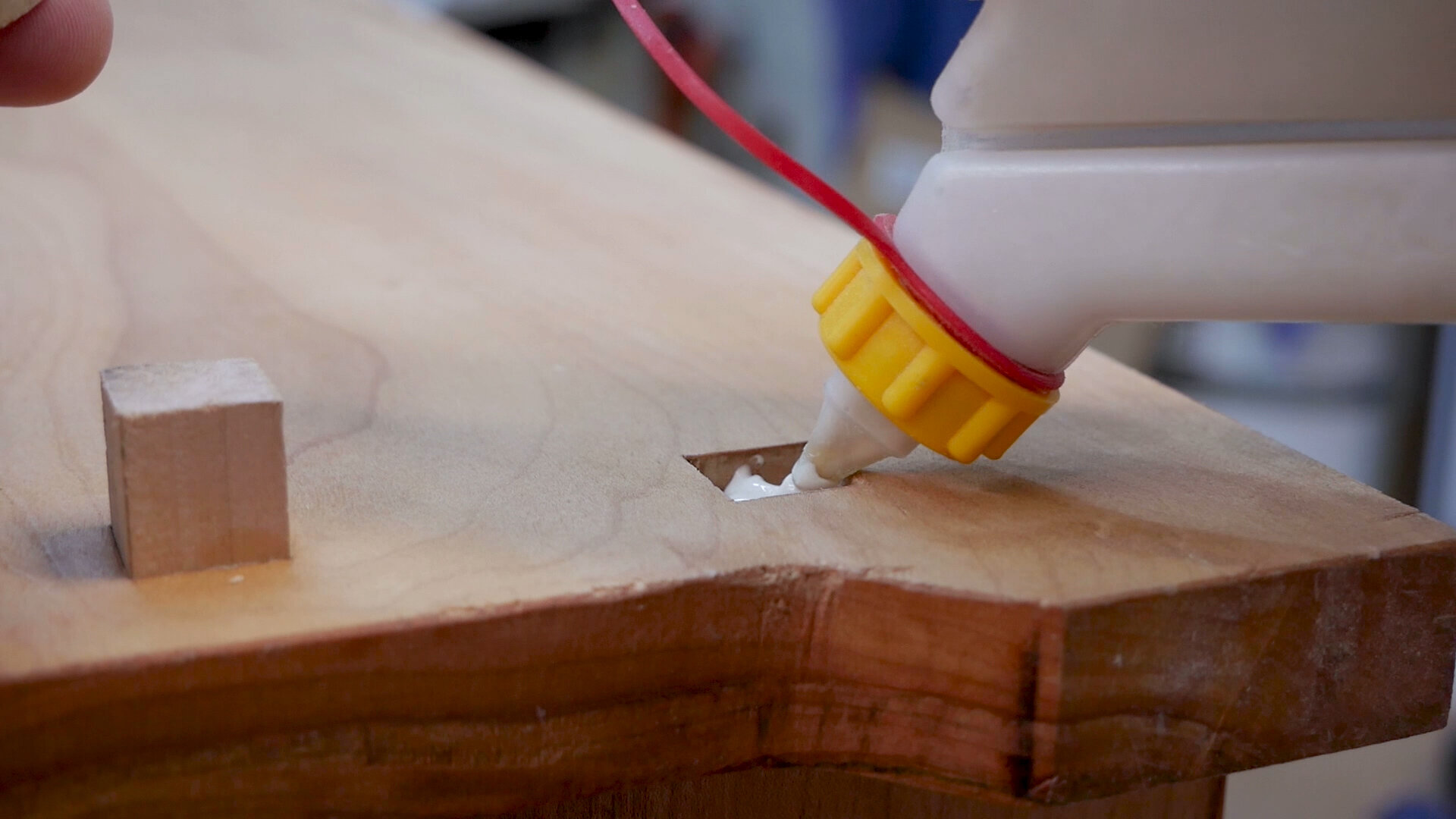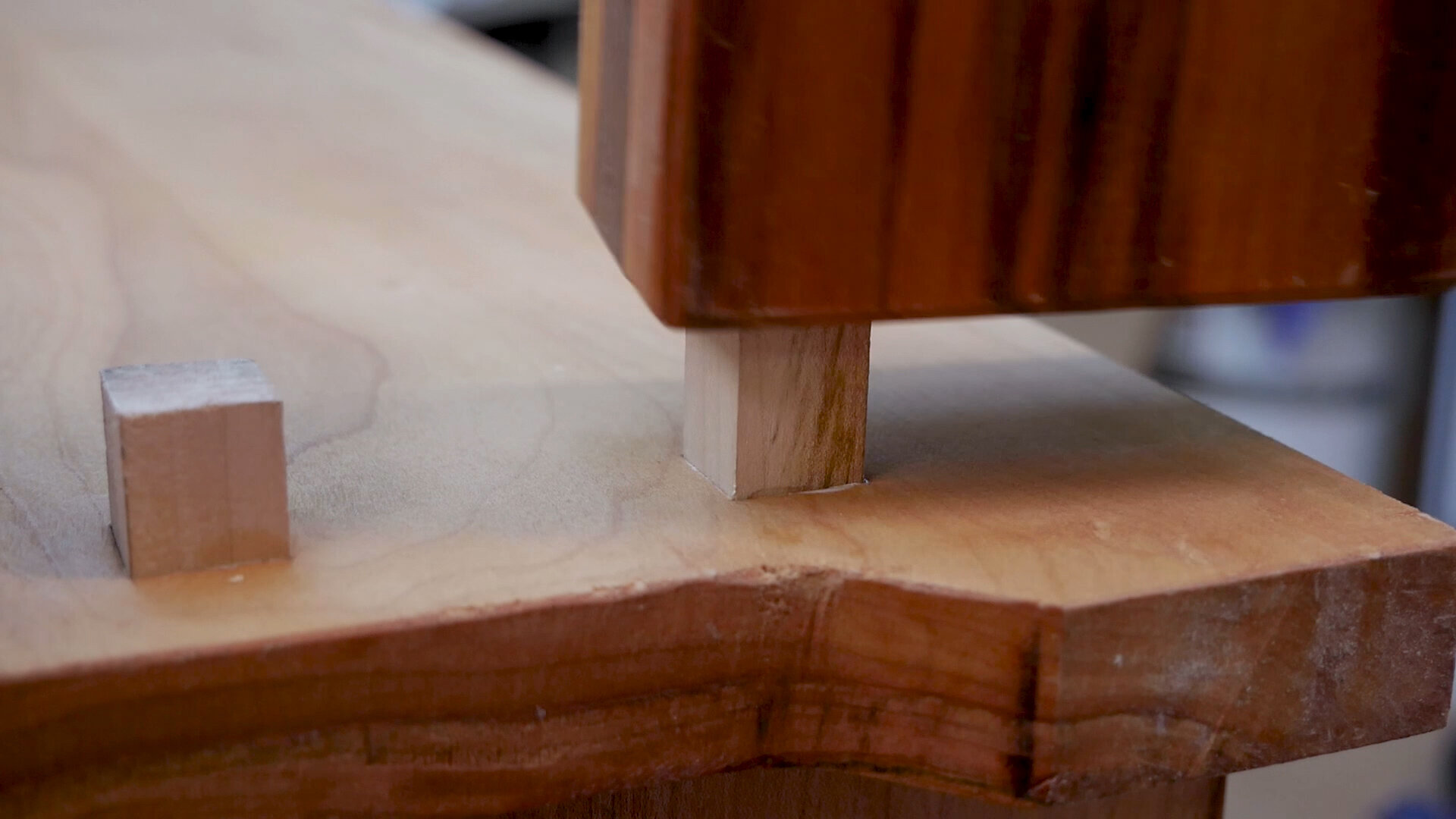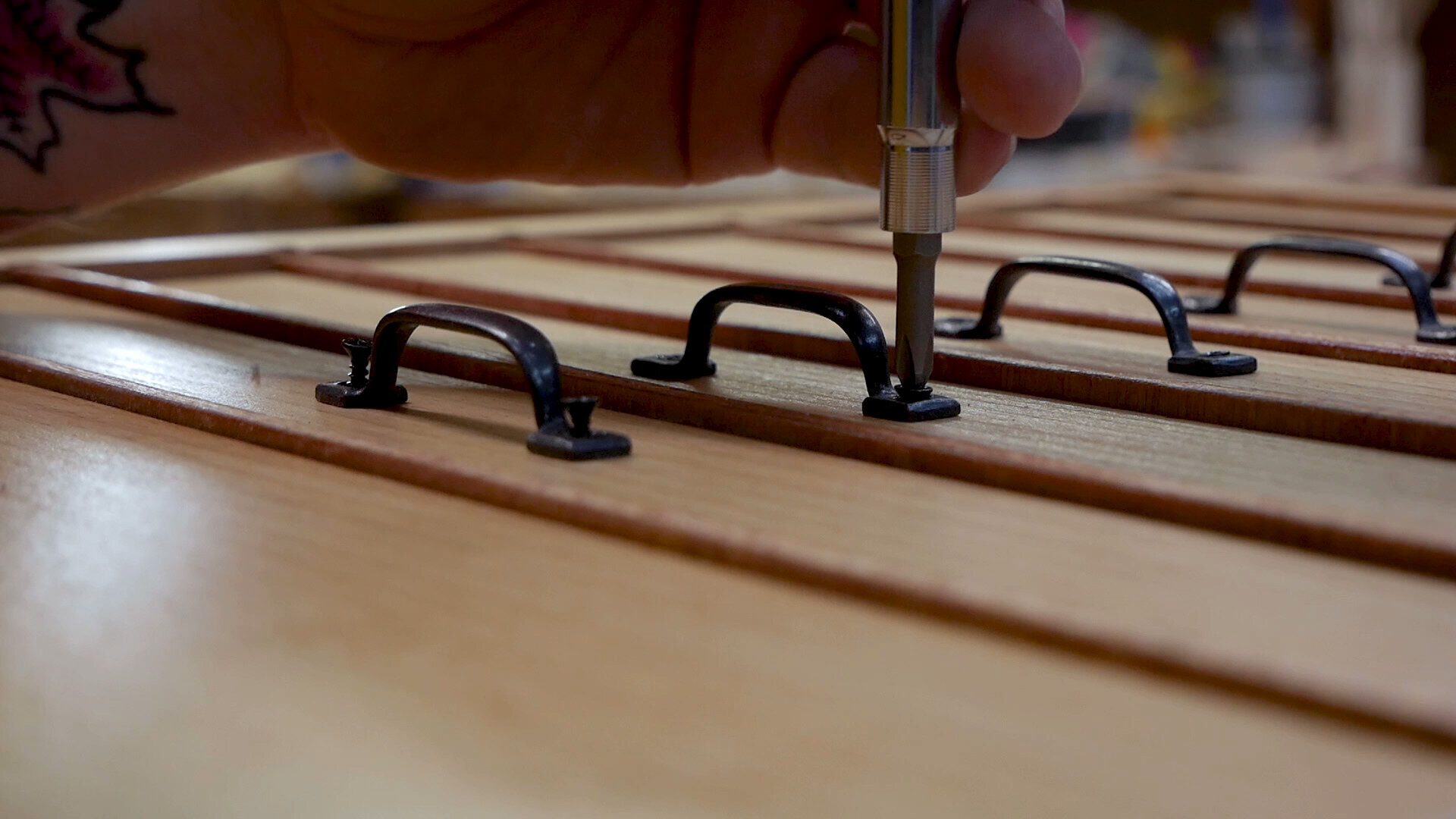How To Make A Wooden Tool Chest With Drawers
Build A Wooden Tool Chest of Drawers
A great storage solution for small parts and tool storage
I’m a shop slob. Any horizontal surface to be had, is probably cluttered. So I wanted to make a small dent in my mess, with a tool chest. This article shows you how I built one, and how you can build one too.
If you’d like to easily build one yourself, I have detailed woodworking tool chest plans available in my shop.
Tools Used:
Table Saw
Miter Saw
Handheld Power Drill
Drill Bits
1.5” screws
Jigsaw or Bandsaw
Bench Chisels
Orbital Sander
Jointer and Planer (optional if you purchase dimensioned lumber)
MATERIALS:
Wood of your choice
Affiliate links are used on this page. See my disclosure page for info on affiliate programs.
How to Build A Small Wooden Tool Box:
Dimension Material
Layout and rough cut pieces
Case Joinery
Pre-finish Case
Assemble The Tool Chest Cabinet
Drawer Construction
Finish TOUCHES
Store your tools!
Dimensioning Material for The Tool Chest
For this project I purchased some heavy duty 5/4 soft red maple from my local sawyer.
Rough-sawn lumber is a great way to save a little extra money and have more control over your yield, but you do pay for the savings in labor when it comes time to surfacing and dimensioning your stock.
Sometimes I opt to spend a little extra $$$ for S3S (surfaced three sides) lumber and save myself some time. Either way works perfectly fine.
I broke down the lumber into more manageable pieces with a jigsaw (a good handsaw will work great too) before ripping the stock to width at the bandsaw.
Rough sawn lumber is almost never perfectly flat or square. That’s why it’s usually recommended to break it down with a bandsaw/jigsaw/handheld circular saw. It helps avoid kickback and is much safer.
A jigsaw turns long, un-wieldy, lumber into short and manageable pieces fast.
The bandsaw is one of the safest ways to rip rough-sawn lumber.
My jointer only has a 6” capacity so some of the stock I needed to surface with a planer sled.
The other, smaller stock, I surfaced normally by jointing one face and one edge, then planing the opposite face before taking the last rough edge to the table saw.
The table saw is safe at this point since I have a very flat face and a very straight edge to reference off of the table saw fence.
Action shot of the jointer flattening one face of the board.
With one face flat, I can reference it off the jointers fence to square and flatten an edge.
I gave myself a hand planing the stock. You can see here the planer sled underneath the lumber.
Laying out Tool Chest Parts on Stock
Referencing the cut list in my plans (available here) I spent a good while laying out my pieces so I can get the best yield and grain match possible. I like to use chalk to do this because it doesn’t permanently mark the wood. If you mess up all you have to do is wipe and repeat.
The plans still are laid out for box joints but changing them to dovetails and adding a through tenon, or faux-tenons, isn’t very difficult. Do whichever you’re most comfortable with.
Sample of the DIY Small Tool Chest plans, showing the box joints originally planned.
Make the Tool Chest cabinet Joinery
With all of the stock nicely squared, flat, and with the parts laid out I could cut individual pieces out at the table and miter saw.
The top and bottom pieces of the case I leave a few inches longer than they need to be. This way if I mess up one side I have enough material to trim the mess-up off and start again.
It’s never a bad idea to leave a little wiggle room.
Parts for the tool chest can now be cut from larger stock at the table saw.
I cut the parts to length at the miter saw about 1/16” proud.
After each new cut at the miter saw, I square the ends of the piece with a hand plane and shooting board.
I’ll remove the extra 1/16”with a hand plane and shooting board, which will also guarantee the ends of my stock are perfectly 90º.
To lay out the proud dovetails I add the blade of a combination square to my stock before dropping the marking gauge. This gives me just about 1/8” “proudness” to the joints; common among Arts & Crafts furniture.
Marking gauge ready to reference stock thickness with added combo square.
Dropping the wheel down to the next board gives a perfect width plus ~1/8”.
Now when it comes to dovetails, there are a TON of awesome and highly qualified resources out there on the internet showing you how to cut accurate and great looking dovetails.
For the sake of brevity, I’ll skip over the “how to cut dovetails” section of this build (as I also did in the video) but I will give you some nifty tips and tricks I like.
I stack two boards together so I can cut two sets of tails a once. A good set of wing dividers makes laying out dovetails a bit easier.
Wing dividers help lay out symmetrical dovetails.
I like to run my angled tail guide lines extra long for the tails and pins. I find the extra line length helps me line my saw up with the angle easier and keep to the angle.
There’s something really special about learning to cut dovetails completely by hand, but if I haven’t cut them in a while, or I don’t want to mess my stock up, I’ll use the Katz-Moses Dovetail Jig. I’m not affiliated with John, I just like his product and think it can help a lot of woodworkers to get comfortable cutting dovetails.
Some of the dovetail “tricks”:
Cutting two boards and two sets of tails at once.
Chiseling away the waste by halving the waste until my chisel lands in the marking gauge groove.
Strop your chisels. A LOT. I’ve found that by stropping after every 2-3 chops keeps the chisel sharp and me enjoying my hand tool for a very long time.
Just be sure not to strop the back (you’ll round the chisel) and try not to round over the front bevel when stropping.
Blue tape trick for the pin board that I learned from Mike Pekovich of Fine Woodworking's book (I highly, highly recommend).
And lastly, disposable utility knives to mark/cut the pin board. They’re thin, long, inexpensive and disposable in a way that I’m cool with. You can put the metal bits in a “sharps” container, then recycle the plastic with your other household recycling.
I use a Japanese pull saw to cut two tail boards at once.
I chisel away the waste by working my way up to the marking line.
Disposable utility knives make great dovetail marking knives.
A coping saw makes removing the waste with a chisel easier.
I strop my chisels A LOT. About every 2-3 chops.
Blue tape makes cutting the pins very accurate and easy.
Next I cut the dados in the case sides at the table saw. These will act as the runners for the drawers to slide along. Make sure to practice good, sound, table saw safety here.
One neat trick if you don’t have a crosscut sled, or your miter gauge for you table saw isn’t very long, is to flip your miter gauge around. This will help get the cut started accurately and square.
A reversed miter gauge can help with wide stock. Consult your owner’s manual first.
Cutting the dados for the drawer runners.
Since this isn't a portable tool cabinet with wheels, I wanted to cut out a small section of the sides to give the tool chest the illusion of having feet.
I did this by marking out the curve that I liked, cutting one side out at the bandsaw, refining the cut with a rasp and card scraper, then transferring that line to the other side and repeating the process.

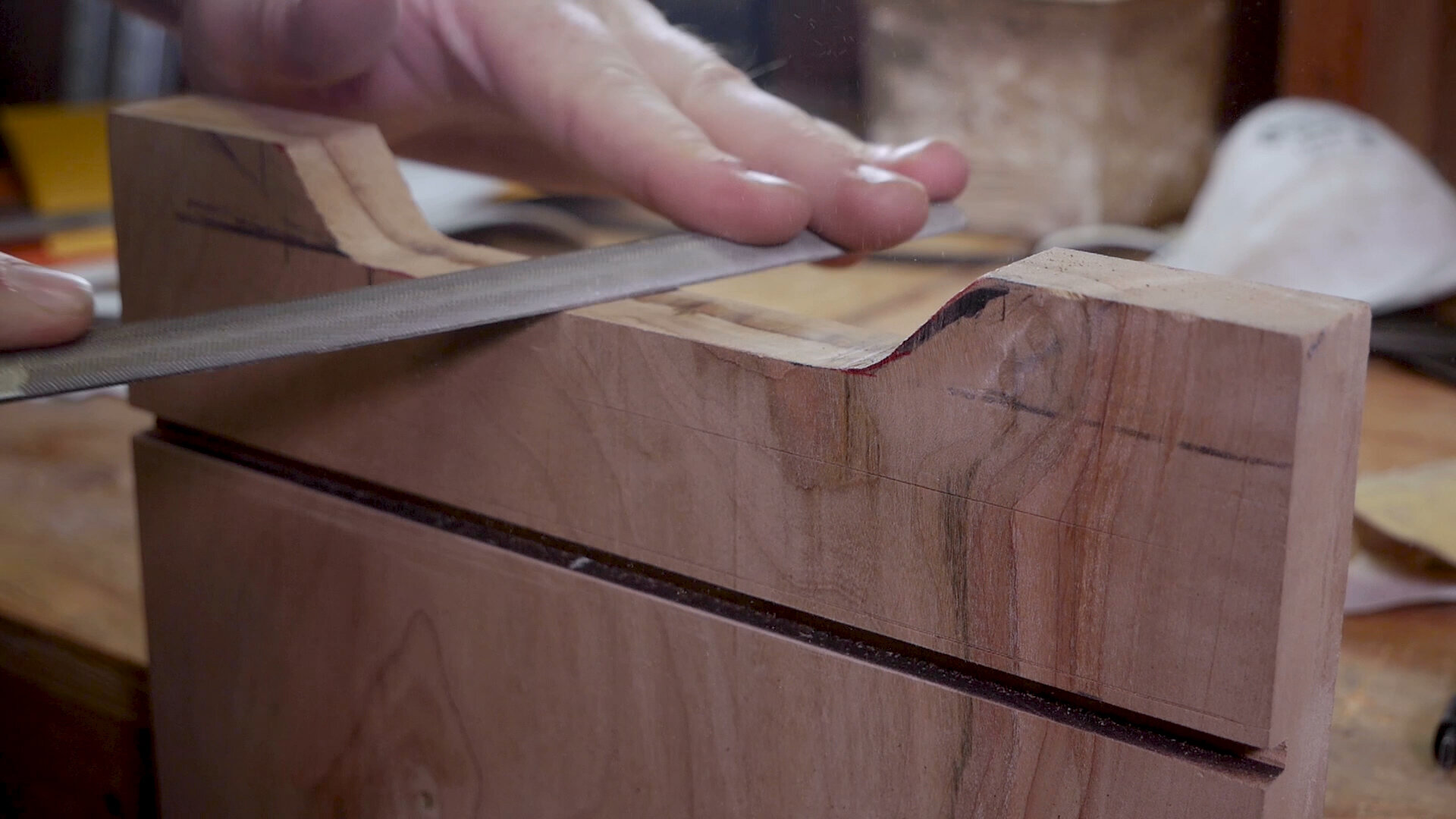
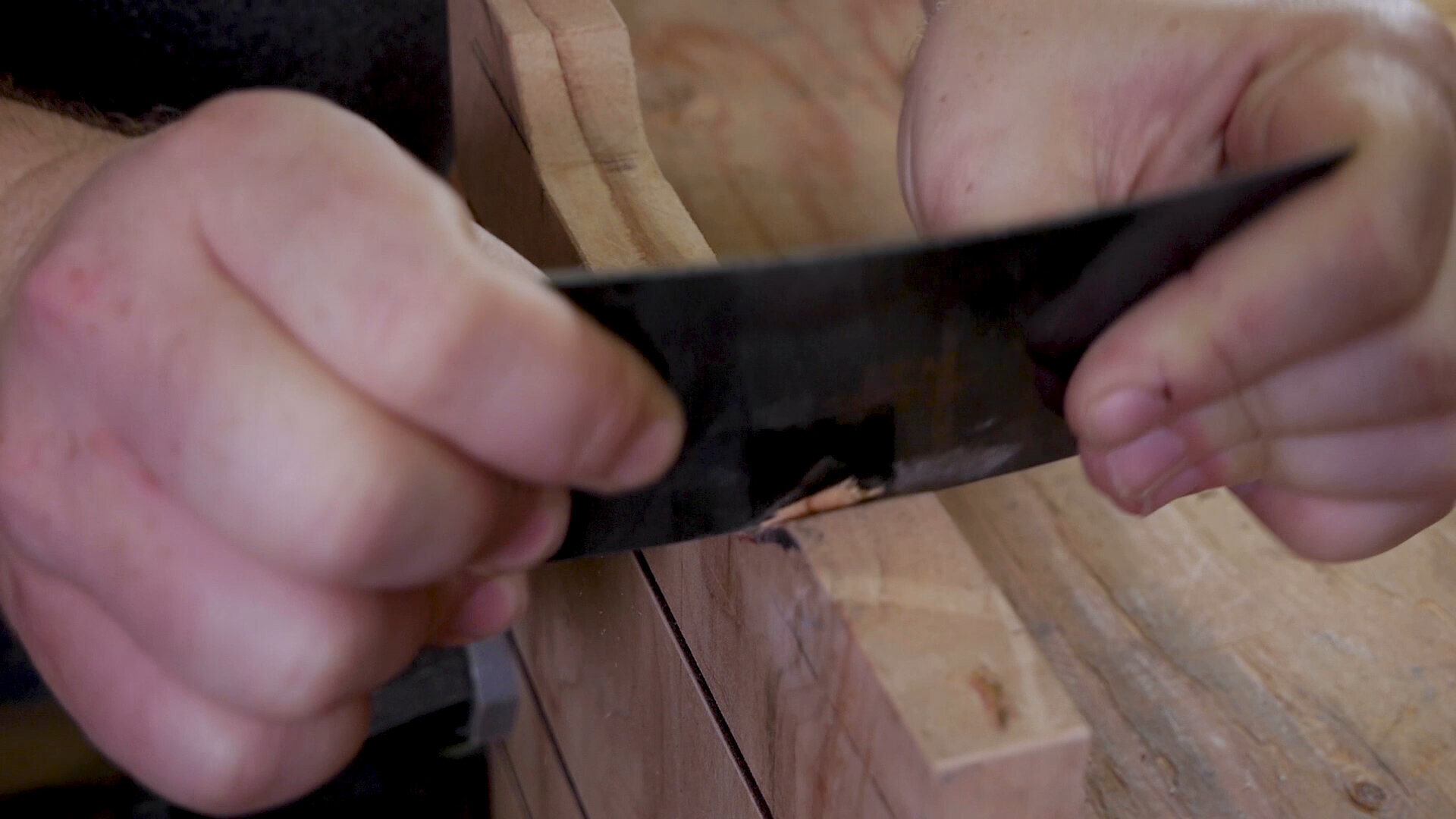
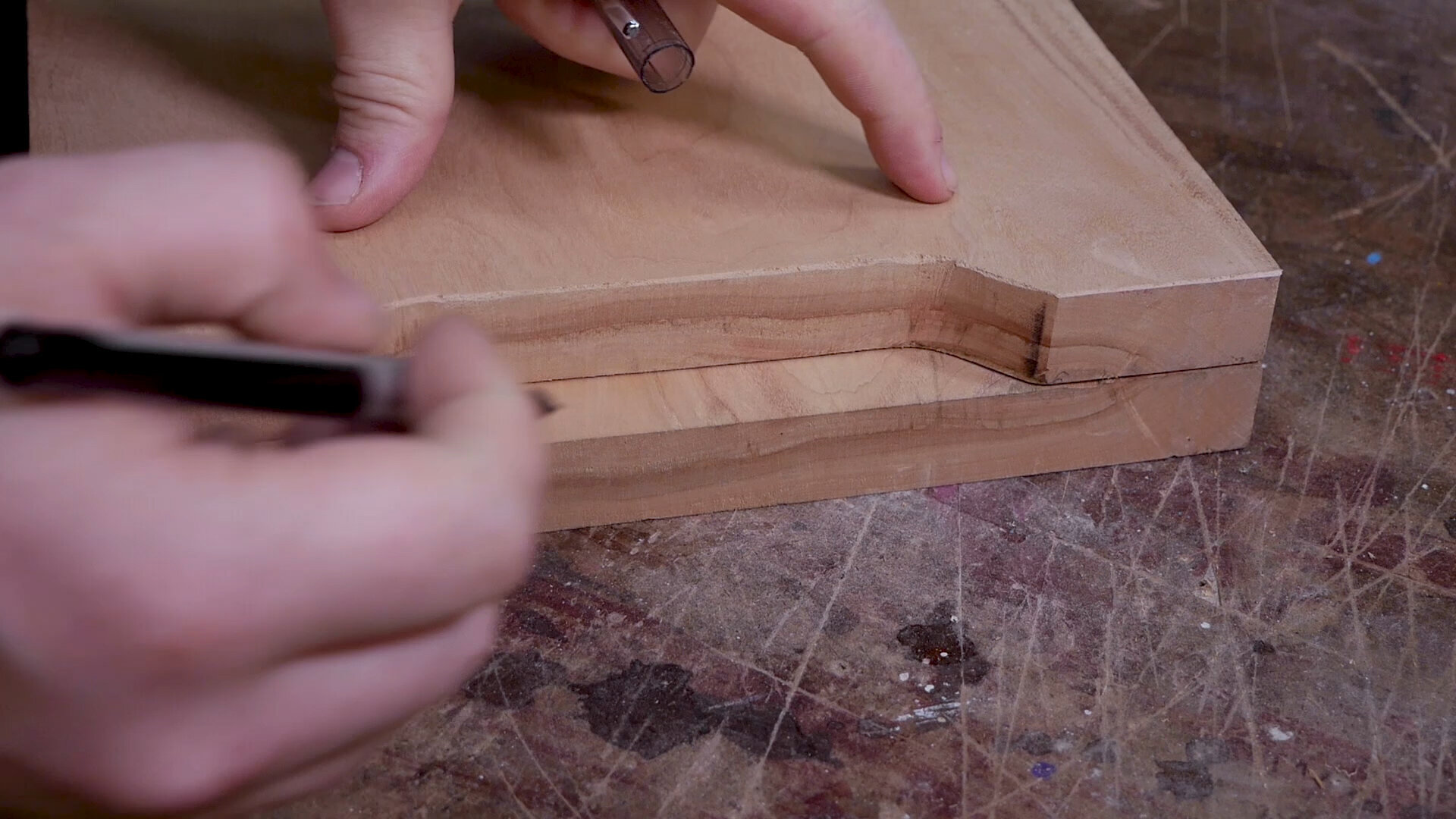
The through-tenon idea of the tool box only came to me after I had already cut my stock to length. I didn’t have anymore at the proper width and I didn’t want to glue up a panel. Using faux through-tenons solved that problem.
I placed blue painters tape on the case sides so that I had a clear place to mark my references on. Using a marking gauge and reference materials instead of measurements makes the process quick and very accurate.
This is easier to explain through video, or the pictures below.
I mark one side of the half-mortise from one side.
Tenon material placed between marking gauge and previously marked line.
Then mark the other half-mortise from the other side.
Removing the tenon material, I can now mark a perfect width mortise.
I used a router and a spiral up-cut bit to quickly remove the waste in the half-mortises, making sure to stay proud of the marking lines, before cleaning up the waste with chisels, stropping often 😉
Routers make clearing the waste from a mortise quick and easy before refining with a chisel.
I mark my joints with roman numerals on inconspicuous places, like the back of the carcass. They won't disappear with sand paper or a card scraper like a pencil mark will, and they lend a “handmade” look that I find really charming.
I mark mating pieces with chiseled in Roman numerals placed at inconspicuous locations. They won’t accidentally disappear like pencil and they lend a handmade look.
Since my dovetails are proud, meaning I won’t be flushing them flat, I lightly bevel and clean up the edges with sandpaper spray-mounted to MDF.
I lightly chamfer the tails and pins.
Sandpaper glued to MDF makes a great tool for chamfering dovetails.
The last step before glue up is to cut the rabbet for the case’s back plywood panel. To do this (since I don’t have a rabbeting bit) I used a router and a straight pattern bit to follow a simple MDF straightedge. The beauty of this technique is I can just line up the MDF with my line, clamp it down, set my bit depth and go! No measuring.
3/4” straight pattern bit with bearing.
Action shot of rabbet being cut, pattern bit is following MDF straightedge.
PRE-FINISHING THE CASE
Pre-finishing keeps the project clean and humming along. It protects your final pieces from dirt and fingerprints, it makes glue up a breeze since squeeze out won’t want to stick as much to finished wood, and it makes the finishing process less of a chore since you’re doing bits and pieces of it as you go.
Before applying finish, I’ll prep my stock by using a card scraper to get everything nice and smooth.
A card scraper, in my opinion, is faster than sanding and leaves a much nicer finish.
Hands down, my favorite finish, is Osmo Poly-x Oil. I have a full video HERE explaining why I love this product so much (not sponsored by Osmo).
Try not to apply finish to anywhere there will be a glue joint. Like the insides of the tails and pins, but feel free to finish the end-grain on those, you’ll thank yourself after glue-up.
I mask off any areas glue needs to make contact with the wood.
Applying 2 coats of Osmo Poly-X Oil by hand.
Pre-finishing the end-grain helps stop glue from seeping in, which can be a real pain.
Tool Chest Case Assembly and Glue Up
Assembly is pretty straightforward. I put the case together by applying glue to the insides of the pin-board only before adding the tail board. This way you’re driving glue to the inside of the case, instead of the pins pushing glue that you’ve applied to the tails, out.
Scrap MDF does a good job of buffering the case side as I tap the dovetails home with a mallet.
Since the dovetails are proud, some scrap cauls help apply pressure where it’s needed.
The most critical part of any case build is making sure that the case itself is square. If not, you’ll play hell trying to get everything else to fit and operate right, especially drawers and doors.
My favorite way to check for square on a case or box build it so to use a set of squaring sticks. They ensure there’s no racking and no measurement error on my part.
Again, always trying to reference instead of measure. It’s just more accurate.
I have a set of plans to build your own squaring sticks HERE, and a video explaining what they are and how to use them HERE.
Making the Drawers for the DIY tool Chest
The drawers for this project are of a very simple design. The bottoms act as the slides, running in dados, while the front, back, and sides are simple butt joints glued to the bottoms.
You could easily make these drawers as fancy as you want, but for some reason I find this method elegant in its simplicity and for storing small tools it’s plenty strong.
The first thing I did was cut the drawer bottoms to size from 1/4” plywood. Then after those bottoms are in place (I lightly chamfer the edges with sandpaper), I could measure from one drawer bottom up to the next for the front/side/back heights.
The 1/4” drawer bottoms are easy to cut at the table saw.
Drawer bottoms in place makes measuring for drawer parts easy.
With those measurements in hand I cut the drawer fronts to rough size and then refined the fit with a hand plane until I achieved the reveal I wanted.
With the fronts cut, I could cut the poplar backs and sides.
Cutting the beech drawer fronts to length at the miter saw.
Cutting the beech drawer fronts for the tool chest to width at the table saw.
A hand plane makes refining the drawer fronts very easy.
Once I had the reveal I wanted, I could use it as a reference to make the sides and backs.
I predrilled the holes for the drawer pulls using Jimmy DiResta’s method for finding the pull hole locations. This is easier to do while the drawers parts haven’t been assembled yet, that way you can lay them down flat. It can still be done with assembled drawers, it’s just a hair harder to do.
Drilling pull hole locations while drawer parts are still disassembled.
To assemble the tool box drawers, glue the poplar backs and beech fronts to the poplar sides, then to the plywood drawer bottoms, leaving enough space on either side for the drawer to slide. Squaring sticks help again to make sure the drawer is square and symmetrical.
With the drawers glued to the drawer bottoms, I could slide it them into their places and make sure the space was right before clamping it down.
I also left the plywood bottoms a little proud depth-wise so I could glue the frame of the drawers flush with the back of the bottoms then trim the excess plywood in the front.
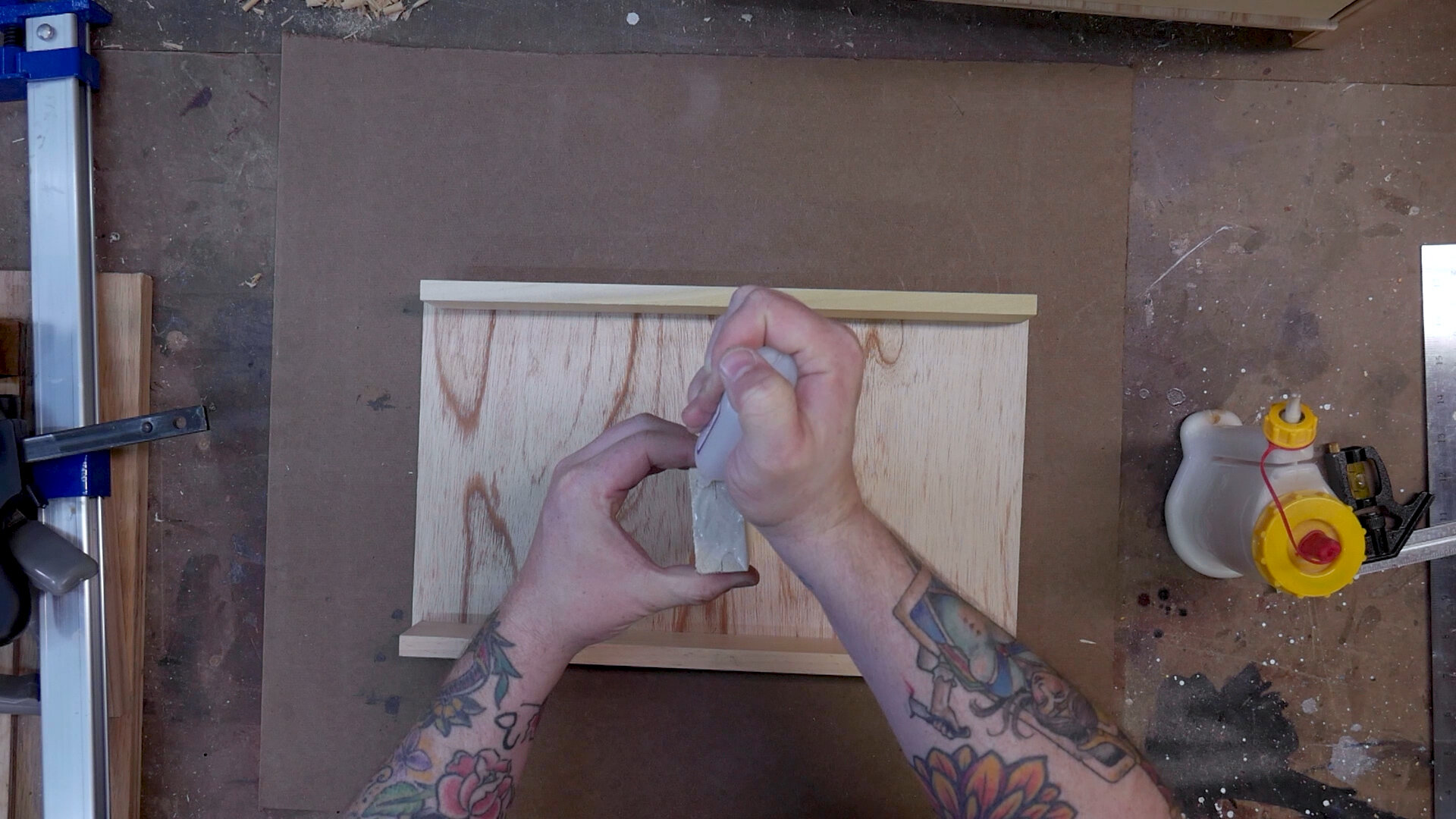
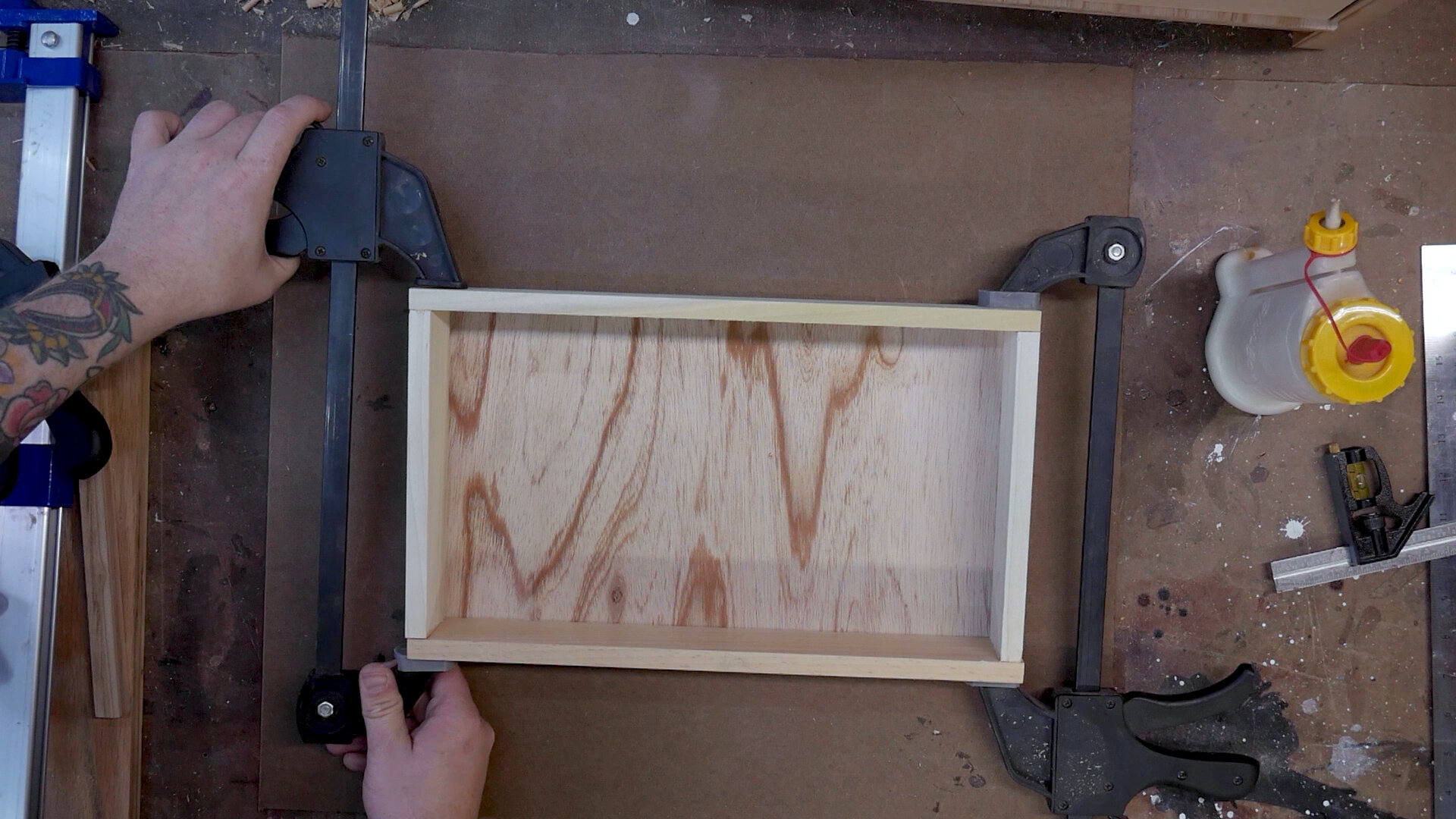
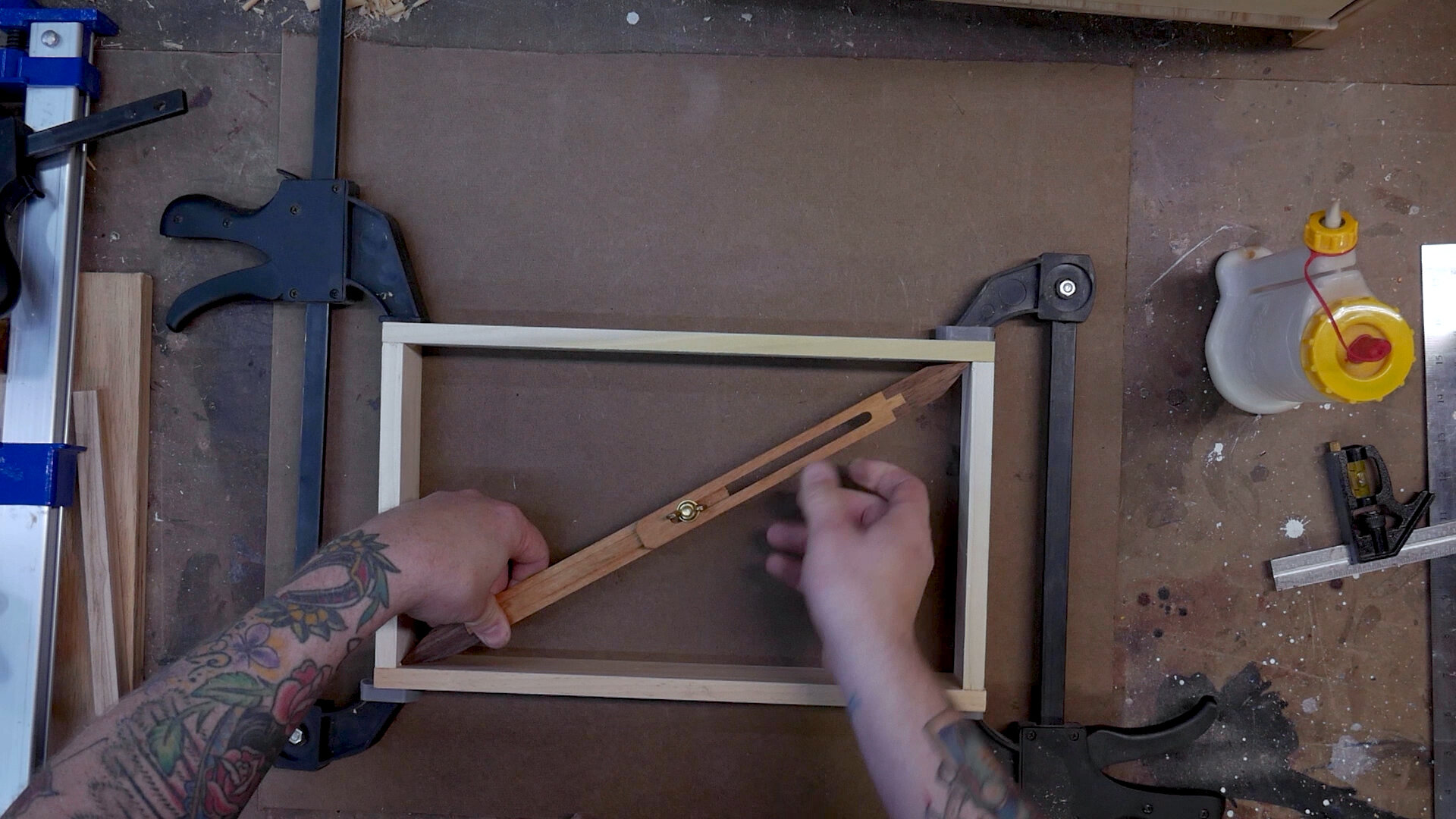
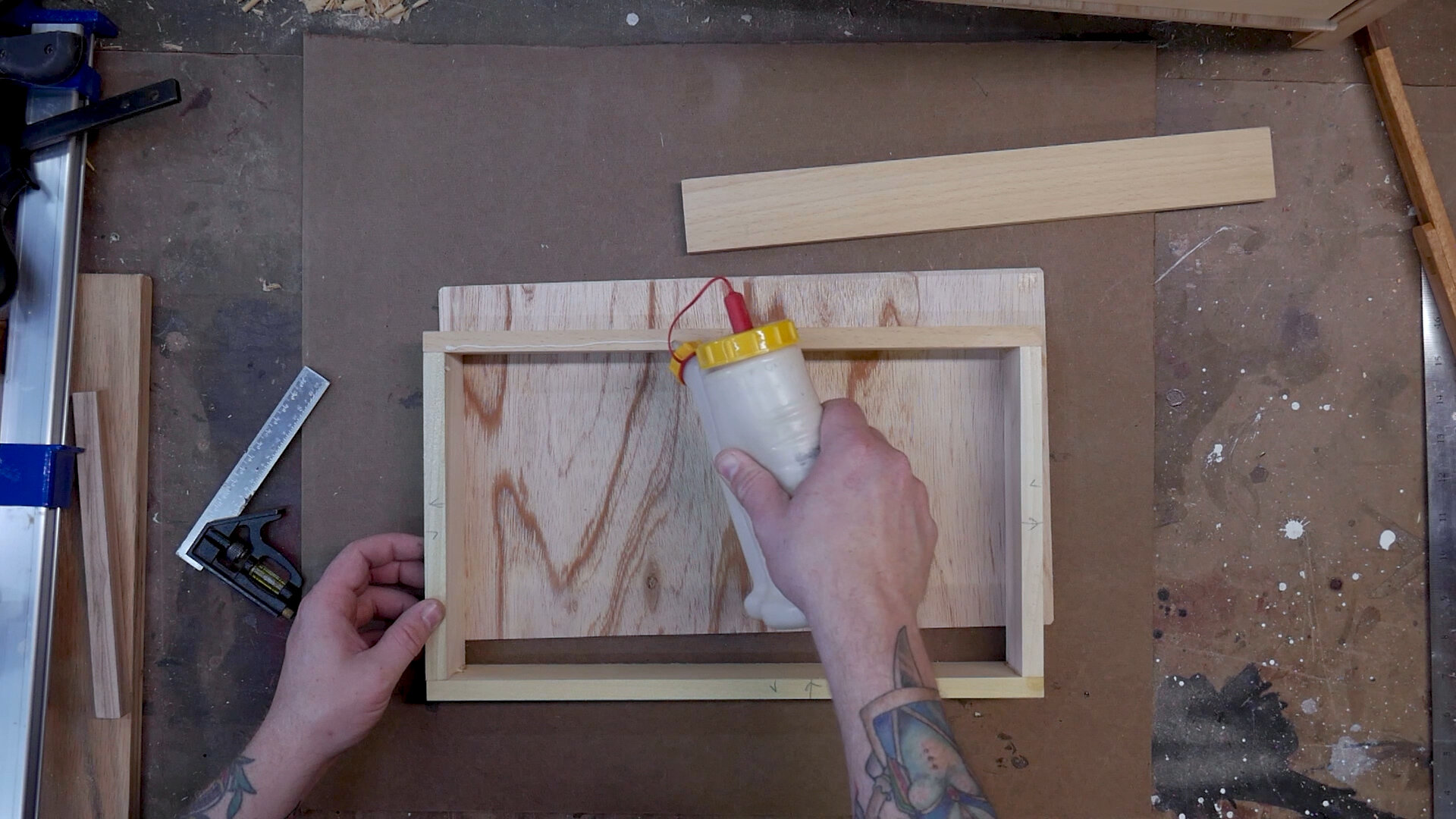
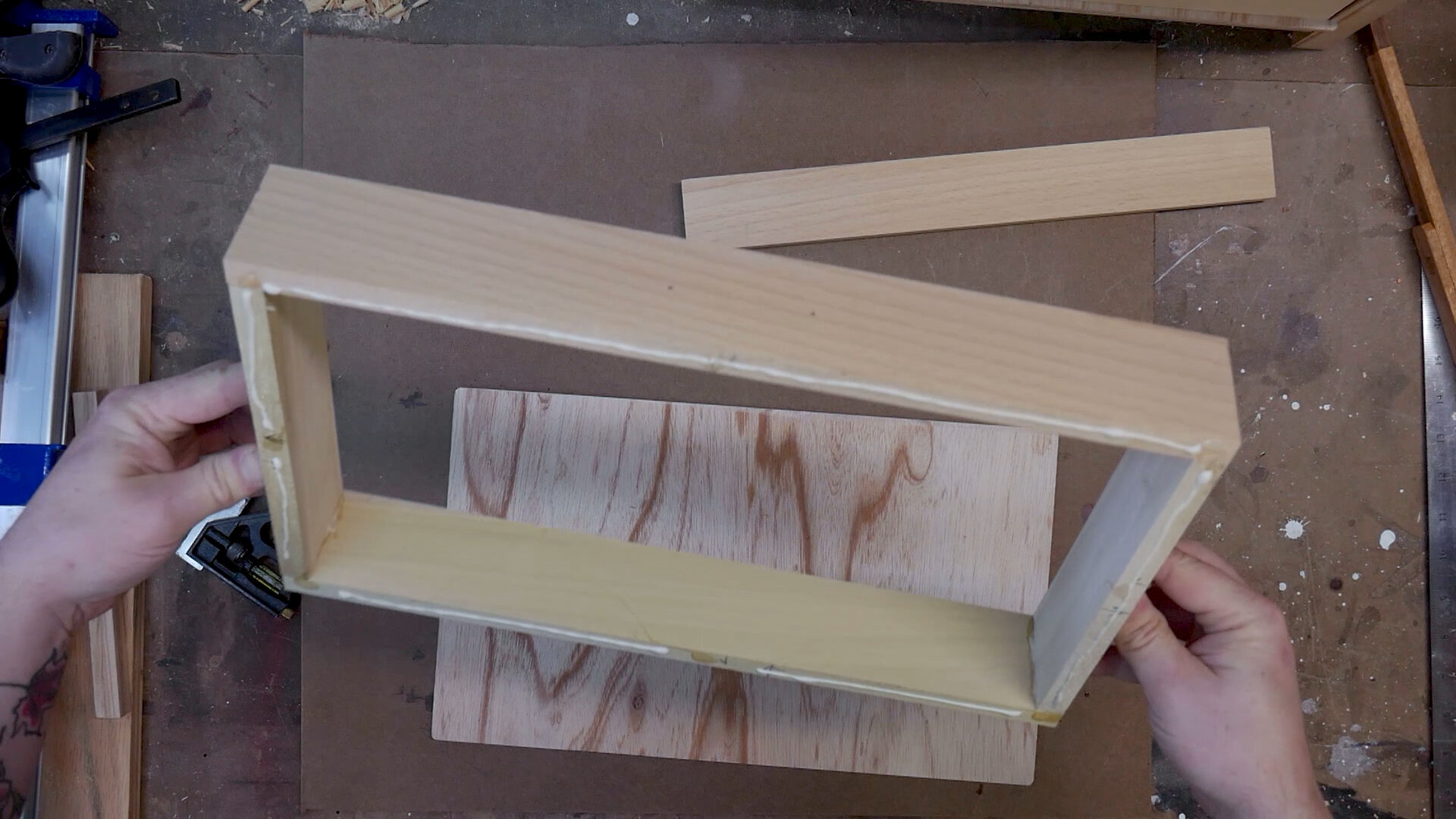
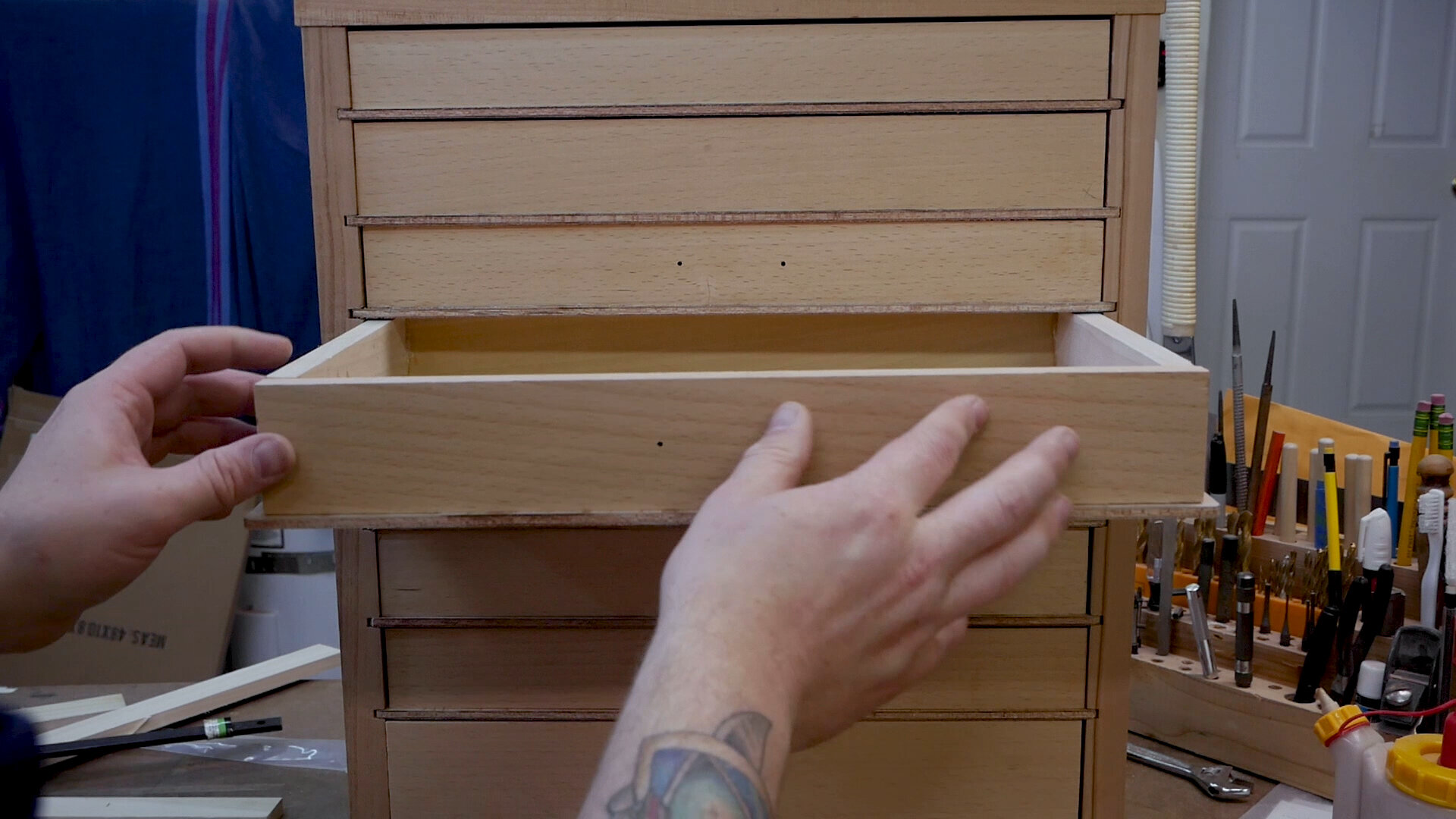
With the drawers assembled and in place I finished them 2 coats of Osmo Poly-X. I’m not exactly sure why I didn’t pre-finish the drawers and saved that until after they were finished, but it worked out just fine.
Putting The FINISHING TOUCHES on the Tool Chest
With all the hard work now done, the last things to do on the DIY Tool Chest are pretty straight forward.
I cut the faux-tenons with a hand saw and squared off each end with a hand plane at the shooting board before cutting the next chunk of wood.
With all of the faux-tenons cut, I placed a small dollop of glue in the half-mortises and drove the tenons home, making sure they were 90º to the case side.
Faux tenons help cover up the screws that attach the case bottom to the sides and add some visual interest.
After they dried, I trimmed them down to match the proud dovetails and then chamfered the ends with a chisel.
I used a scrap piece of plywood to keep my saw elevated from the workpiece as I trimmed the faux-tenons.
Work from the outside in when chamfering with a chisel so you don’t tear out a corner.
Living near a hipster city has its perks, like having a vintage hardware store nearby. These drawer pulls are from the 19-teens and came from a huge cabinet shop in Portland that went out of business after World War 2.
Something about how they didn’t quite fit the aesthetic perfectly was appealing to me. Almost like taking a really classy collectible car and putting a doofy bumper sticker on it. Shows that the person driving (or making in this case) is human.
All hipster joking aside, if you’re in the Portland area make sure to stop by Old Portland Hardware. Beautiful store.
Vintage drawer pulls sourced from Old Portland Hardware here in Oregon.
Time to organize your tools in your new wooden tool chest!
With your DIY Tool Chest complete, it’s time to organize your small tools, knick-knacks, and shop!
This was a very fun build that pushed my skills to the limit: solving problems, dealing with rough-sawn lumber, dovetails, faux-tenons, different styles of drawers, etc.. But now, I have a place for small tools that not only works well, but holds a truly surprising amount of things in a very small footprint. N
ot to mention I get that warm and fuzzy feeling every time I open a drawer of, “Hey, I made this. It works, and it looks good. and I’m the one that did it.”
My only hope is that you end up building one, or something similar, and have that same feeling of accomplishment.
Keep up the good work, because there’s good work in the making!

